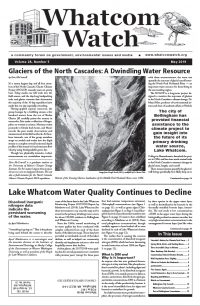by Karlee Deatherage
Our drinking water is at a tipping point.
The drinking water source for over 100,000 Whatcom County residents, Lake Whatcom, faces an onslaught of threats — from logging and development to pesticides and invasive mussels hitching rides on uninspected boats.
Logging and other activities that disturb land or soil let excess phosphorus into the lake. This excess phosphorus can jeopardize the health of our drinking water, especially for children, older people, and sensitive groups due to the reliance of chlorine to treat the water to remove algae (a byproduct of excessive phosphorus) before it reaches our tap.
Lake Whatcom’s annual health check-up released by the WWU Institute for Watershed Studies, and discussed at the March 27th Annual State of the Lake meeting, shows that phosphorus levels in the lake, as well as several other key water quality indicators. We need to pick up the pace and exceed our phosphorus reduction targets.
The biggest near-term step we can take for the health of our drinking water is to support a stormwater utility district in the Whatcom County portion of the Lake Whatcom watershed. Establishing a stormwater utility district will make it so watershed residents — who have a direct impact on the health of lake — help fund protection and restoration at a faster pace. The city of Bellingham already has a stormwater utility district and a watershed fee on water bills to generate revenue to protect and restore Lake Whatcom. It is time the rest of Whatcom County does the same. The Whatcom County Council will consider the stormwater district this spring.
______________________________
Karlee Deatherage is the clean water policy analyst for RE Sources for Sustainable Communities.




























